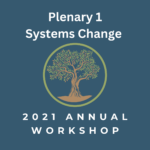By Alastair McKechnie [email protected]
There are a number of recent ODI publications that address getting to scale including the following:
“Monitoring and learning for country-level portfolio decision-making and adaptation” (https://www.odi. org/sites/odi.org.uk/files/resource-documents/12713. pdf) (May 2019; by Anne Buffardi, Paige Mason, Claire Hutchings and Samuel Sharp)
Most measurement and adaptive management approaches were developed for and from individual projects. This briefing aims to guide measurement and management of country-level portfolios of work. It identifies potential purposes portfolio-level analyses can fulfill, types of adaptation, and the relative role of monitoring, learning and evaluation (MEL).
Drawing on reviews of practice from the United States Agency for International Development (USAID) and the United Kingdom Department for International Development (DFID), guidance notes, and experiences of members of the Global Learning for Adaptive Management (GLAM) initiative, it offers recommendations and considerations that are particularly relevant for this level of analysis and management.
“Transforming fragile states: forging a new consensus” (June 2019; by Alex Their)
A group of world leaders, including the late UN Secretary-General Kofi Annan and former President of Liberia Ellen Johnson Sirleaf, came together with experts under the leadership of ODI, The Rockefeller Foundation and the US Institute of Peace to draft a set of principles and approaches to catalyze change. The Bellagio Consensus that emerged from these discus- sions seeks results at scale in fragile settings.
“The potential of Nepal’s social security allowance schemes to support emergency flood response” (https://www.odi.org/publications/11346-potential-ne- pal-s-social-security-allowance-schemes-support-emer- gency-flood-response) (May 2019, by Rebecca Holmes, Fiona Samuels, Martin Evans, Anita Ghimire and John Twigg)
Nepal’s approach to disasters has shifted in recent years to promoting resilience and preparedness as well as response. In addition, innovative approaches by emergency and development actors have sought to respond to an increasing scale of need. The role of social protection in responding to shocks is one of these approaches and has seen increased high-level policy attention in recent years. This includes a focus on the potential use of cash-based responses through the existing social security allowance (SSA) system to respond to emergencies (as was done in the 2015 Ghorka earthquake), as well identifying the need for feasible and sustainable approaches to respond to shocks under the evolving federal system.
“Scoping and design for taking forecast-based early action to scale: three case studies” Working and discussion papers (April, 2019) by Thomas Tanner, Lena Weingartner, Florence Pichon, Bill Gray, Kiswendsida Guigma, Jafar Iqbal, Simon Levine, David MacLeod, Khairun Nahar, Kaiser Rejve, Courtenay Cabot Venton, Catalina Jaime, Martin Todd and Stephen McDowell
The papers describe and contrast three types of humanitarian financing-delivery systems and what they can teach us about scaling up mechanisms for forecast-based early action.


